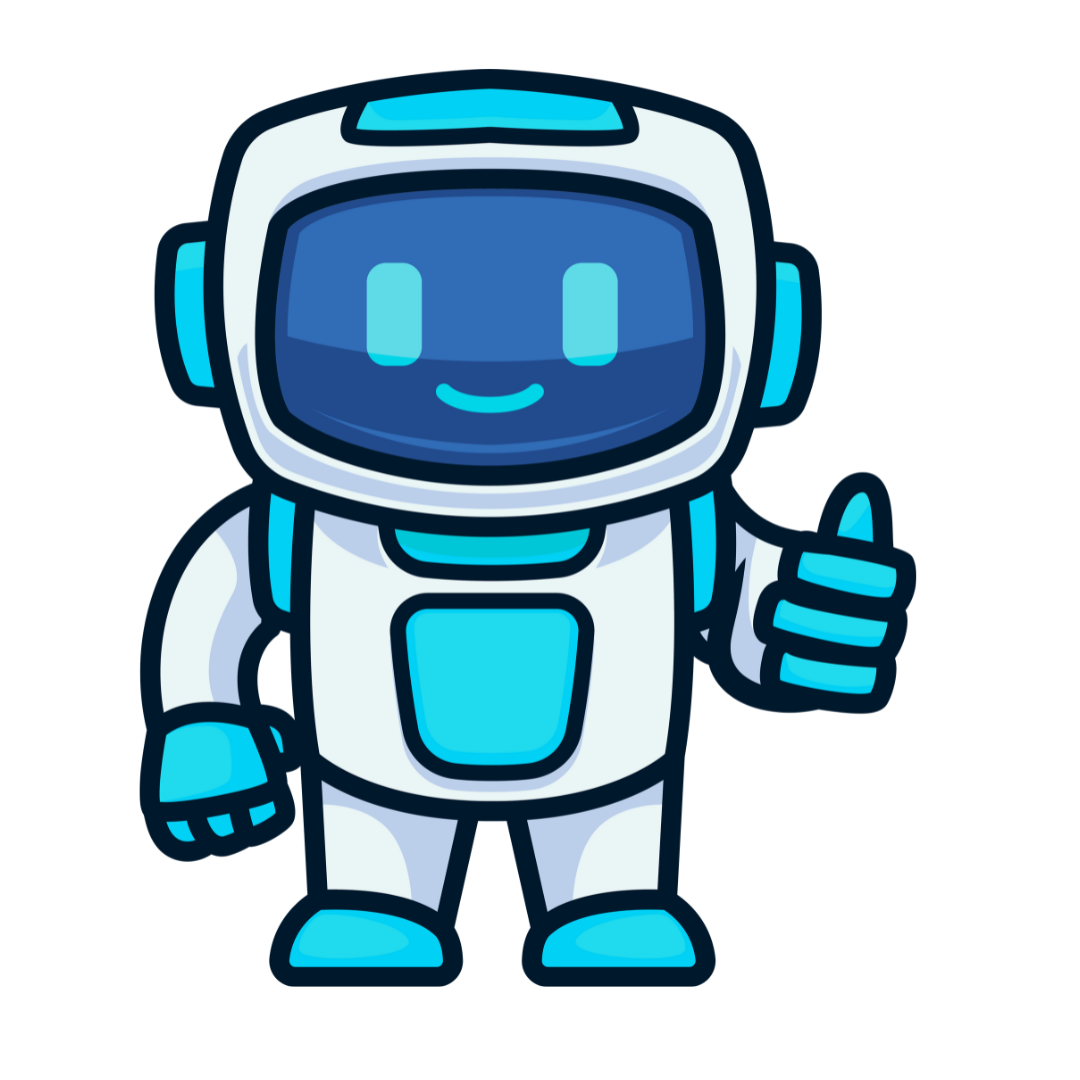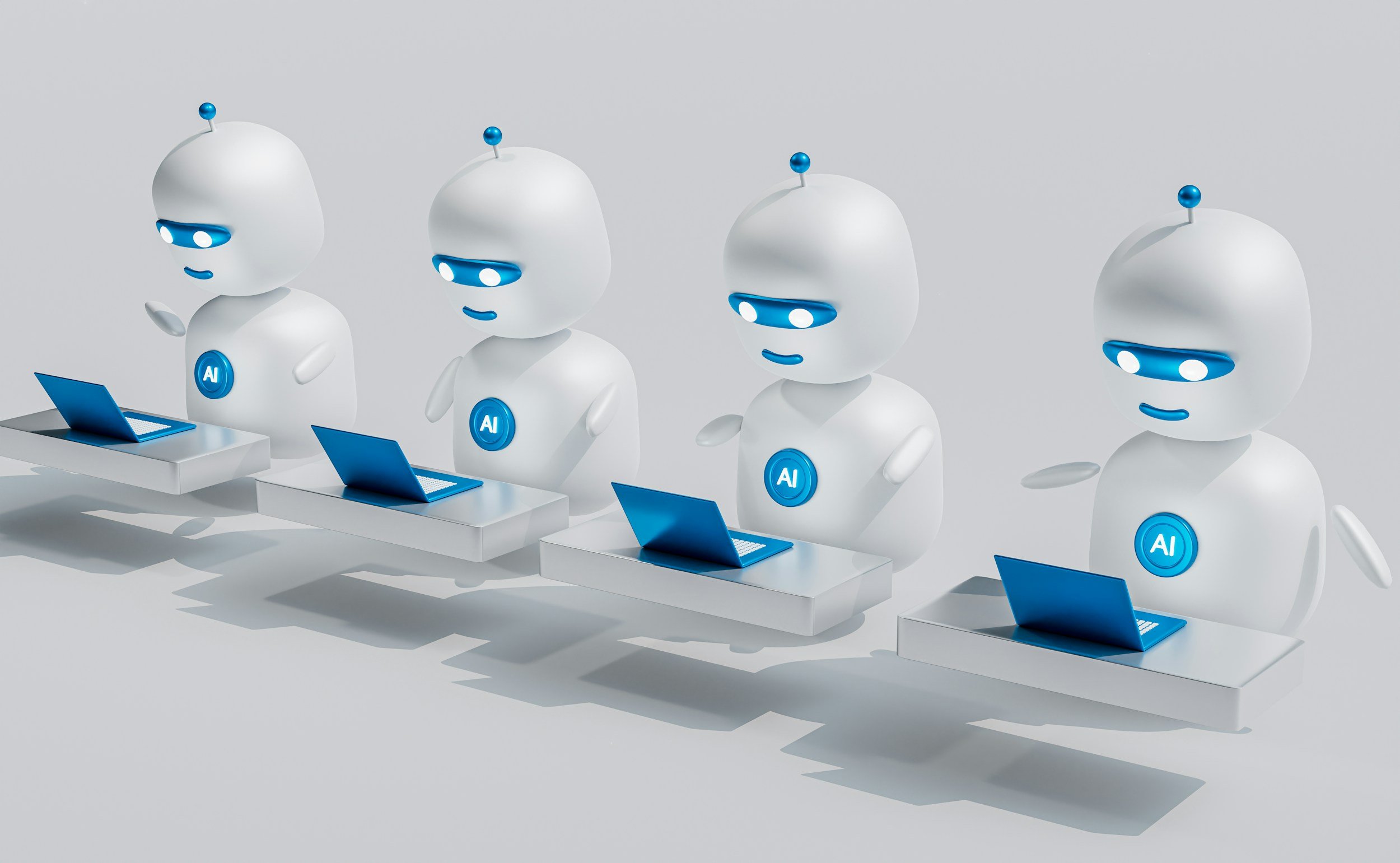Hey Parents! AI is Here to Stay! Now What?
Autocorrect gone rogue, self-driving cars going in circles, and spill detection robots blocking our way in grocery stores. What a time to be a parent!
However we got here, AI has infiltrated our homes, families and day-to-day experiences. And it is here to stay.
Technology can make parenting easier. From AI-wellness trackers that monitor sleep and screen time to merged schedules, this uncharted adventure is both exciting and overwhelming. According to a study from Common Sense Media, 63% of parents say they rely on technology to help their kids learn, and the numbers are only going up. But how do we make sure children are using these tools in beneficial ways without replacing human connection, skill building and authenticity?
Looks friendly, right? Well, that depends.
Learn to help your child harness the power of AI without the pitfalls!
Education and AI
Let’s look at education. AI-driven learning platforms can personalize lessons and help kids grasp concepts at their own pace. "AI has the potential to be an incredible tool for student learning, but it should always be a supplement to human instruction, not a substitute," says Dr. Lisa Feldman, an education technology researcher. While AI can be used to reinforce difficult subjects, provide additional practice, or offer explanations in new ways—it should never replace critical thinking, adult instruction or peer interaction.
AI should support, not replace, skill development in reading or writing. Book and chapter summaries can be useful, pre and post-reading, but students won’t experience the tone, messaging, sequencing and intrapersonal processing gained by immersing themselves in an author’s intentionally-crafted work. AI can help with brainstorming, rewording or creating outlines for writing. However, as an educational specialist, I strongly suggest that students do all of this on their own first. So much personal and intellectual growth comes from sitting and thinking, getting unstuck and finding ways to think critically and organize thoughts. It is important that students approach writing ethically by ensuring that the final work remains their own. They should not simply reword or reorganize work by AI; they should craft, write, and edit on their own with moderate use of AI as a tool.
It is so valuable for your child to develop an authentic relationship to reading and writing.
It might look messy - but that’s exactly how it should be!
Helping Your Child Use AI Responsibly
It is important to have ongoing family conversations about AI. How can you convince your child to use AI moderately when their peers, who do otherwise, succeed with more free time? Although a tough sell, this isn’t as impossible as it sounds. First off, ask to see drafts of your child’s work. Explain that this is not about trust; it is about learning to navigate an overly enticing “shortcut”. You don’t need to suggest edits or get involved in their work. While respecting their independence, you can simply oversee the process. It is important to communicate the reasons for your involvement. Start by explaining that, while AI can be a helpful tool, it is important to develop critical thinking and problem-solving skills. Encourage them to use AI as a support tool rather than a time-saver. Share the idea that learning is about the process, not just the end result. You might say, "AI can help explain or give you ideas, but the real learning happens when you try to solve problems on your own." Highlight that using AI excessively can prevent them from building the skills needed to succeed long-term. Finally, make it a collaborative experience by offering to help with challenging tasks so that AI isn’t the only go-to option. Show them that the more they engage with their work, the more confident and capable they’ll feel.
It is also advised to teach your children to fact-check AI-generated responses. AI tools pull information from a vast range of sources, and not all of them are accurate. Encourage your child to verify facts with trusted sources; this teaches critical thinking. Lastly, transparency is key—if AI was used to help with an assignment, students should acknowledge it, just like they would cite any other source. Teaching students to use AI responsibly will help them develop ethical tech habits that will serve them extremely well in school and beyond.
Parents should model and teach healthy use of AI.
Don’t let your child learn unhealthy AI habits from their peers.
Using AI for Good
Beyond education, AI and tech tools can be used to keep children safe. GPS tracking apps help parents ensure their children get home from school safely, and AI-driven parental controls can filter out harmful content. But experts urge caution. “The goal isn’t to track every move but to create a sense of trust and security,” explains child psychologist Dr. Emily Vargas. Setting clear family agreements about digital privacy and technology use is key. Gradually increasing freedom, while allowing room for mistakes, is key to healthy development. It is so valuable to be intentional about how you use AI in your relationship to your child.
Of course, there’s also the question of balance. We want our kids to be tech-savvy but not tech-dependent. AI-driven social media algorithms can fuel addiction, anxiety, and the echo-chamber effect. A study highlighted by TechStory revealed that AI-generated images of "ideal" bodies depicted highly unrealistic physiques, perpetuating distorted beauty norms and lower self-esteem. AI-powered recommendations can lead to doomscrolling, excessive screen time, and information overload.
That’s where digital wellness tools come in—apps that encourage mindful screen time, promote better sleep, and even offer family-friendly meditation exercises. Apps like Headspace for Kids offer guided meditations designed to help children manage stress and improve focus. According to the American Academy of Pediatrics, the key is "co-engagement"—using technology together rather than letting it become a solo activity. Watching educational videos as a family, playing interactive learning games, or even setting up AI-assisted projects together can make screen time less isolating and more meaningful.
At the end of the day, it’s up to us to ensure AI enhances—not replaces—real-world learning and meaningful human connection. Let’s embrace the best of what AI and digital tools have to offer while keeping our guidance and expectations firm. After all, no app in the world can replace an adult’s love and wisdom, not to mention our terrible jokes, outdated fashion advice, and painfully awkward attempts at Gen Z slang!
So, parents, you can do this! Go forth, be brave and support your child to thrive on their healthiest, happiest path.
About Kathleen
Kathleen Young, M.Ed, is an educational specialist, academic coach, and life coach. She is the founder of Aurora Lights Coaching and works part-time at a nonprofit dedicated to the prioritization of executive function instruction in schools. Kathleen loves helping her clients tap into their strengths and find a purposeful energy that moves them forward.




